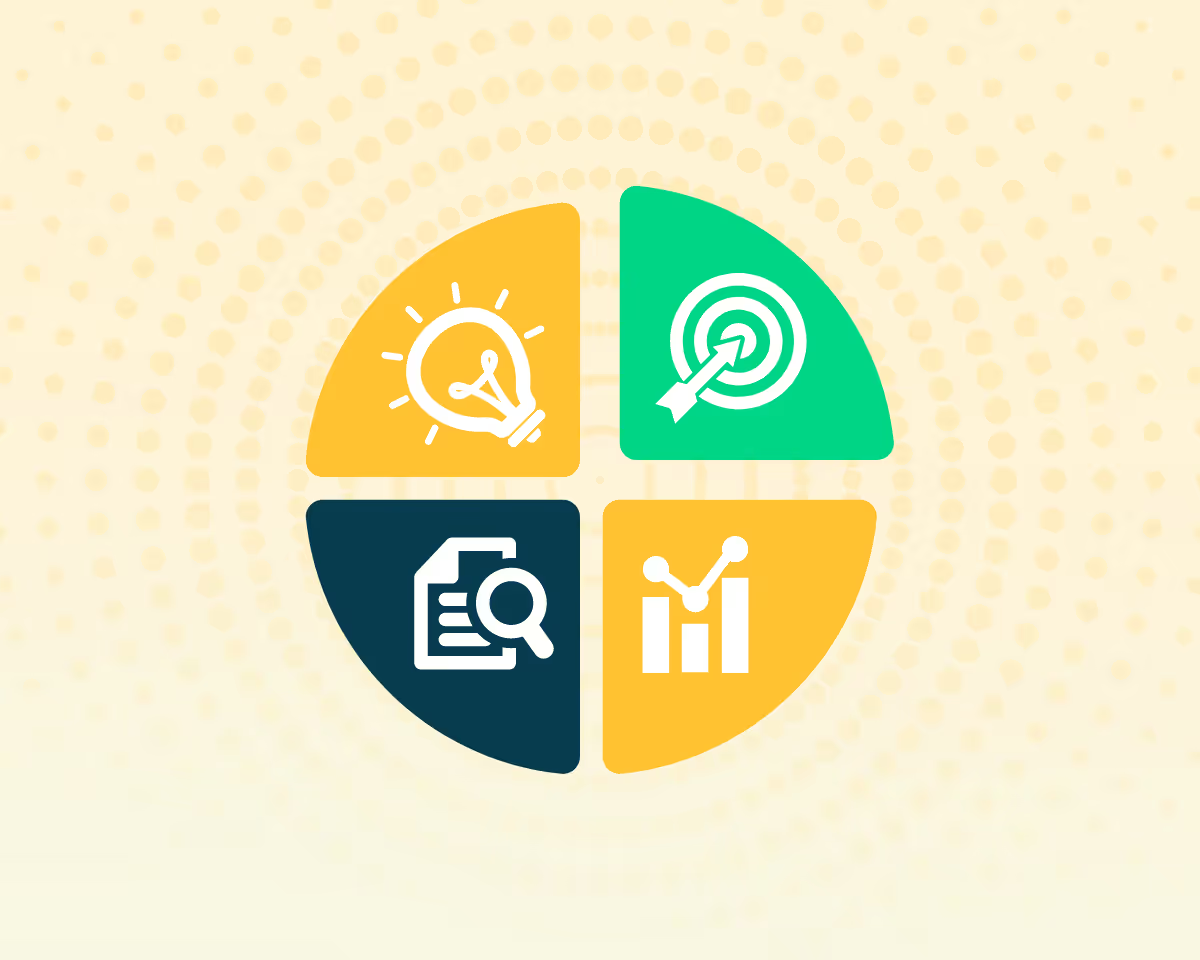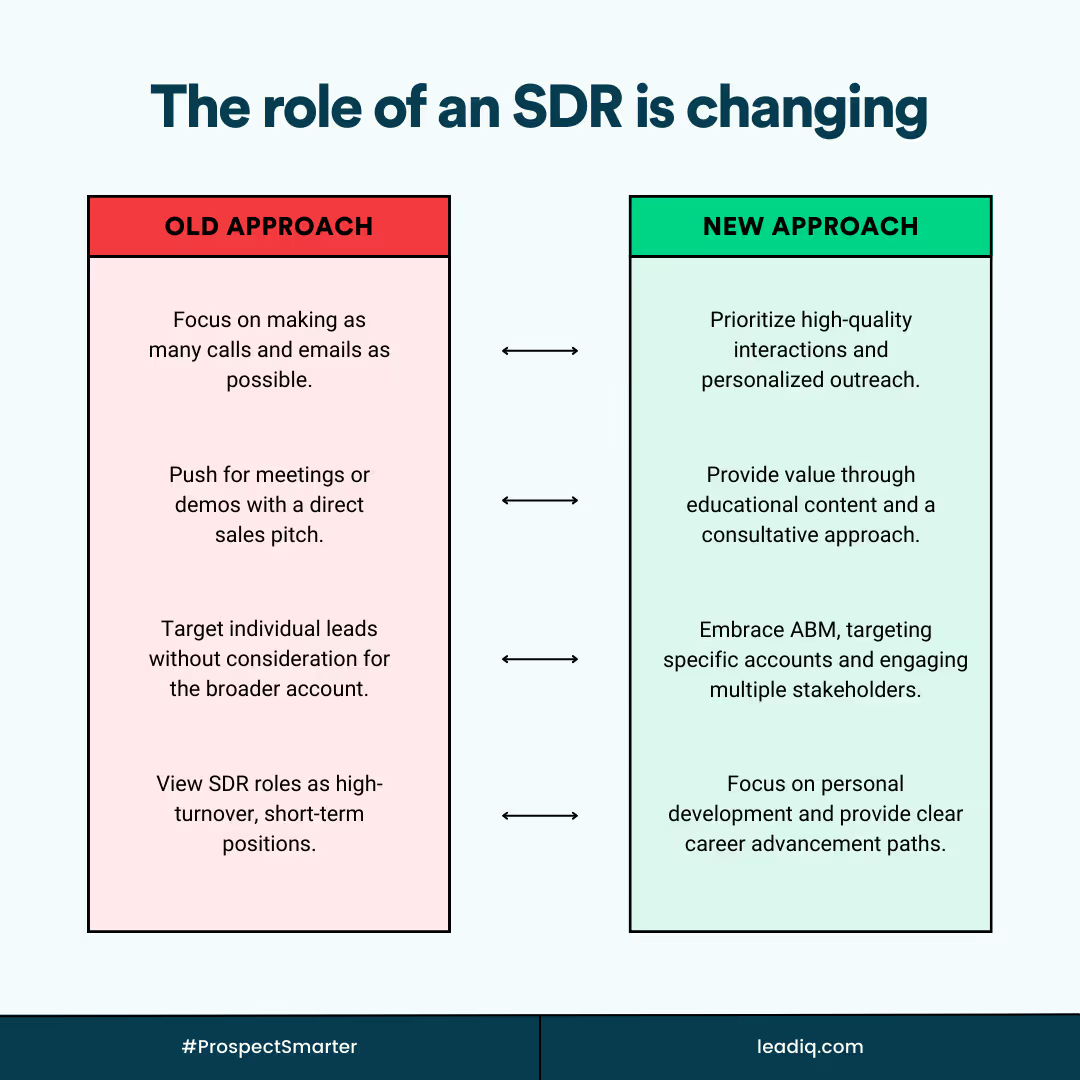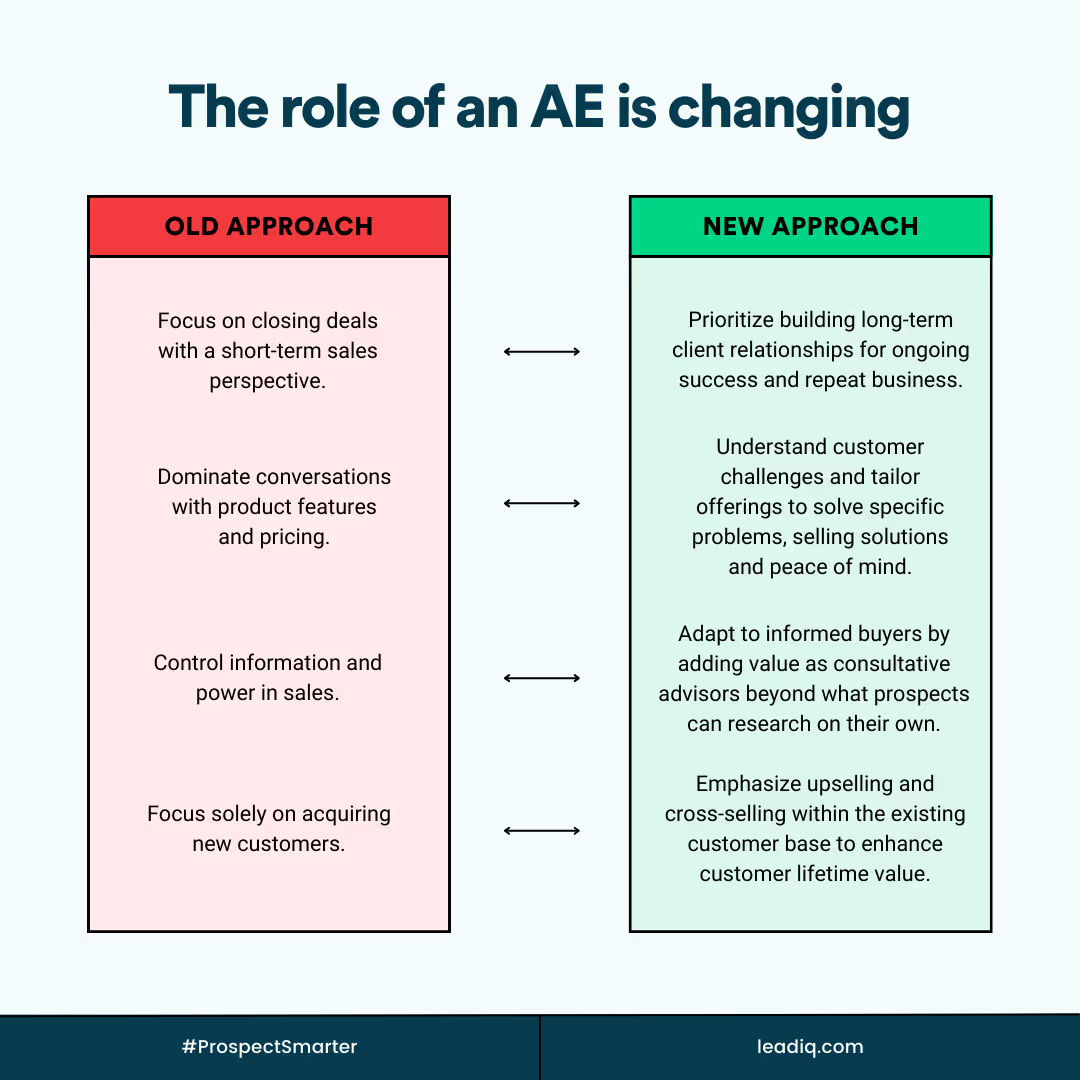Ready to create more pipeline?
Get a demo and discover why thousands of SDR and Sales teams trust LeadIQ to help them build pipeline confidently.



As buyer demographics shift towards generations that are digital natives, sales teams have to evolve to prioritize quality engagements over quantity, focusing on tailored sales processes.

Advancements in AI and automation tools are transforming sales roles by minimizing routine tasks, enabling sales professionals to focus more on strategic activities that build relationships and drive revenue.

Traditional sales metrics are being replaced by approaches that emphasize deal size, flow, and engagement over quantity of reach outs with a stronger integration of account-based marketing and social selling.
Get a demo and discover why thousands of SDR and Sales teams trust LeadIQ to help them build pipeline confidently.
The B2B sales landscape has undergone significant transformation in recent years, reshaping the roles of sales development representatives (SDRs) and account executives (AEs).
Traditionally, sales success was measured by metrics like calls made, emails sent, and meetings booked — a quantitative approach that prioritized generating a high volume of activity above all else.
However, with advancements in technology and changes in buyer behavior and buyer demographics — more and more millennials and Gen Zers are coming to the table — there’s been a noticeable shift towards prioritizing quality over quantity in prospecting efforts. This shift emphasizes the importance of engaging prospects on a deeper level by understanding their needs, preferences, and pain points as thoroughly as possible.
In turn, the roles of SDRs and AEs have evolved to place greater emphasis on building meaningful relationships, providing tailored solutions, and delivering value at every stage of the buyer journey. In today’s environment, sales professionals need to adapt and stay agile if they wish to remain competitive and successfully navigate evolving B2B buying motions.
If you’re curious about how SDRs and AEs are changing, you’ve come to the right place. Keep reading to learn more about how the sales landscape is evolving, the role technology is playing in the new buying landscape, and how SDRs and AEs are adapting their approach in response.
But first, here’s a brief reminder of what each of these critical sales roles entails.
A sales development representative is responsible for prospecting, qualifying leads, and initiating contact with potential customers. Their primary role is to generate and nurture leads through outbound outreach, cold calling, emailing, and social selling strategies.
SDRs focus on identifying prospects who have a need for the company’s products or services and qualifying them based on predefined criteria. After that’s done, they hand off qualified leads to AEs for further engagement and conversion.
By creating opportunities and building pipeline for the sales team, SDRs play a crucial role in the sales process.
An account executive is a sales professional who’s responsible for managing relationships with existing clients and acquiring new business. AEs work closely with prospects to understand their needs, present solutions, negotiate contracts, and close deals.
AEs serve as the main point of contact for clients, providing ongoing support and guidance to ensure customer satisfaction and retention. They also collaborate with other departments, like marketing and customer success, to deliver value and meet revenue targets.
By identifying opportunities, building strong relationships, and delivering tailored solutions that address clients’ business objectives, AEs are laser-focused on driving growth.
Over the last several years, the sales prospecting landscape has undergone profound transformation driven by several factors: shifting demographics, changing buyer preferences, accelerated innovation, and the pandemic chief among them.
According to Forrester data, 48% of millennials are involved in the buying process. As millennials and members of Generation Z continue to become decision-makers at organizations, there’s a notable change in the expectations and behaviors of B2B buyers. Reared in an internet-powered world, these younger professionals are already accustomed to seamless digital experiences in their personal lives, and they’ve brought these preferences for digital-first interactions into the professional realm.
But this evolving preference isn’t confined to the younger generation alone. According to one recent report, 68% of B2B buyers prefer digital-first experiences to the point that they don’t want to interact with sales at all. Instead, they prefer self-service options and online research over direct engagement with sales reps. For this reason, it comes as no surprise that the same Forrester report found that 88% of millennial buyers say excellent digital buying experiences are important when selecting a vendor.
This preference has perhaps been further amplified by the pandemic, which forced businesses to adapt quickly to remote work environments and virtual interactions. As a result, the adoption of digital tools and sales prospecting and lead generation platforms accelerated significantly.
In addition to accelerating digital transformation, the pandemic also extended sales cycles, with more touchpoints and more decision-makers in the mix, making the process exceedingly complex. With remote work becoming the norm and in-person meetings becoming less frequent, sales professionals must find innovative ways to engage and build relationships with prospects they may never meet in person.
Navigating these complex sales cycles effectively requires a deeper understanding of buyer needs, pain points, and motivations. As such, sales teams need to invest in data-driven insights, personalized messaging, and value-added content to effectively engage prospects at every stage of the buying journey.
As technology continues to evolve, new tools are revolutionizing the way sales teams operate, significantly reducing manual tasks and administrative work. This shift has enabled sales professionals to redirect their focus toward higher-value activities that drive revenue and foster meaningful customer relationships.
By automating routine tasks like data entry, lead qualification, and scheduling, sales reps can spend more time and energy on activities that directly impact sales outcomes — like prospecting, nurturing leads, and closing deals.
One of the bigger benefits of modern sales tech stacks is the improved access to data. By harnessing the power of customer relationship management (CRM) systems, analytics tools, and artificial intelligence (AI), sales teams can gather, analyze, and leverage data more effectively than ever before. This wealth of information provides valuable insights into customer behavior, preferences, and buying patterns, enabling sales reps to make more informed decisions about which prospects to pursue, how to approach them, and when best to engage.
What’s more, modern sales tools empower sales professionals to personalize their interactions with prospects and tailor their outreach strategies based on individual preferences and needs. By leveraging data-driven insights and using generative AI writing tools, like LeadIQ Scribe, reps can deliver targeted messaging, offer relevant solutions, and engage the right prospect at the right time with the right message. Not only does this approach enhance the customer experience, it also increases the likelihood of conversion.
Now that you have a better idea of how the sales landscape and the technologies that power it are changing, let’s explore how SDRs and AEs are changing in response.
How exactly is the SDR role changing in response to new B2B buying motions? Let’s take a look.

Now that you have a better idea about how the SDR role is changing, let’s turn our attention to AEs.

Here at LeadIQ, we’re all about helping SaaS sales and GTM teams accomplish more every day. We do this by delivering the most accurate contact data on the market through data partnerships, public domain data, a data community, and proprietary algorithms that proactively verify data on an ongoing basis to ensure it stays up-to-date.
In addition to data, we are also keen on building a product that helps teams move faster and faster. Our feature-rich platform integrates with the tools your organization relies on — like Salesforce, Salesloft, Outreach, HubSpot, Gong, and Gmail — so your outbound prospecting workflows can be more productive and effective than ever before.
Plus, we’re always working on features designed to help you get more done — like Contact Tracking, which enables you to zero in on warm leads; Scribe, which helps you write personalized emails in just a few seconds; and our recently overhauled Identify Dashboard, which makes LeadIQ usage data more accessible than ever before, enabling sales leaders to coach their teams more effectively.
To learn more about why LeadIQ is the ideal sales prospecting platform for today’s ever-evolving B2B buying landscape, request a demo today.